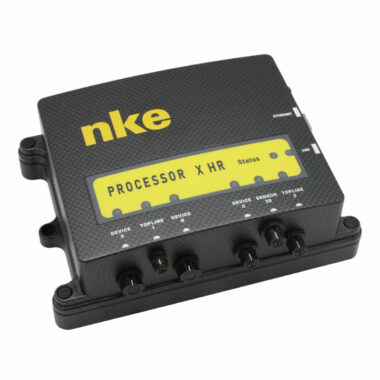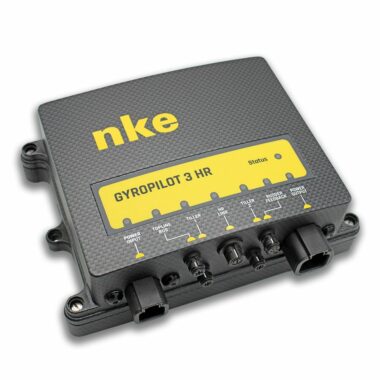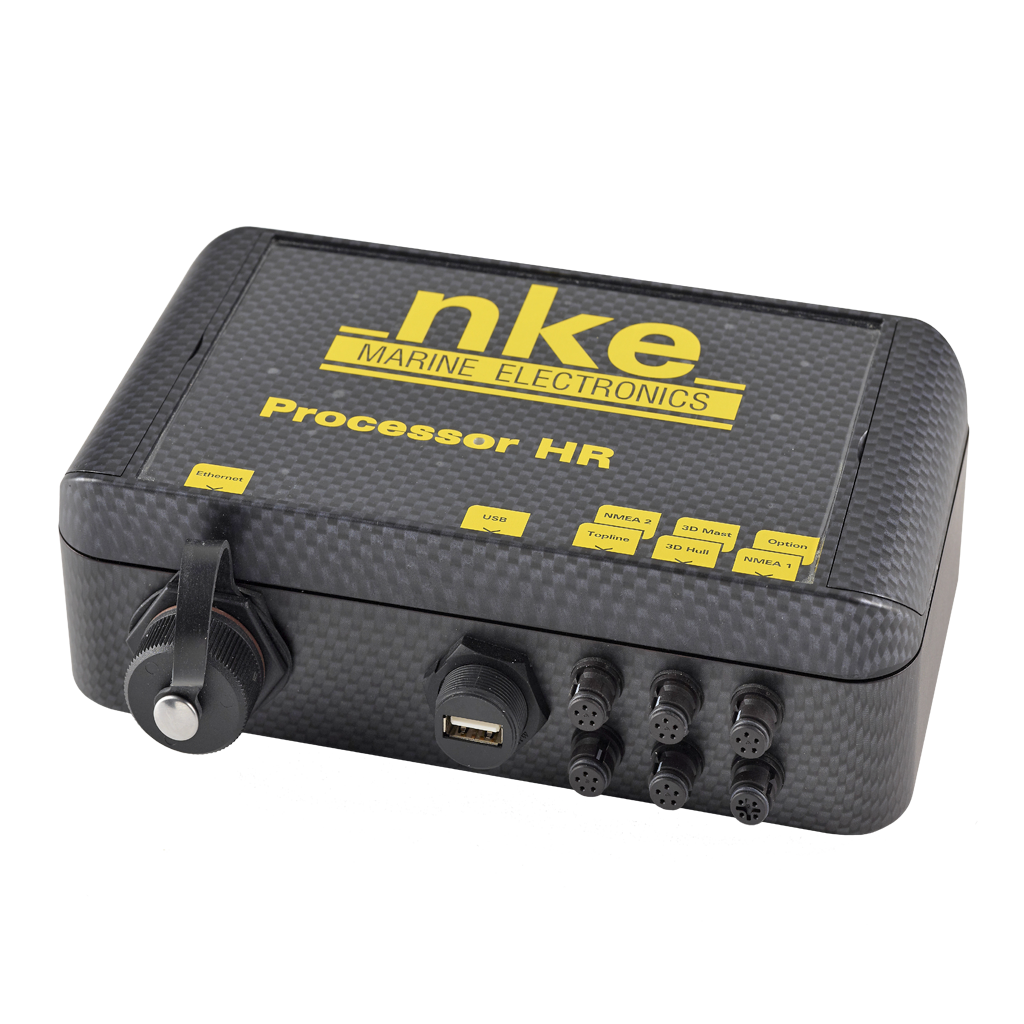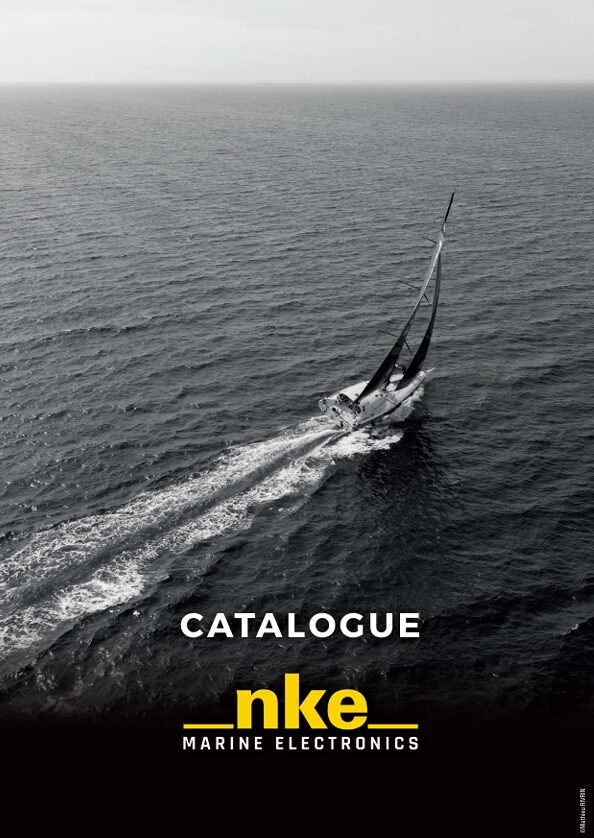HR PROCESSOR
SPECIFICATIONS
Consumption | 277 mA (3.3W @ 3.3V) |
Power supply voltage range | 9-18V |
Dimensions | 200 x 110 x 60 mm |
Waterproof protection | IP67 |
Connector | Waterproof USB type B connector |
Topline | Topline1 for the display and regular sensor (Binder620) |
NMEA Inputs | 2 NMEA inputs |
FEATURES
The HR Processor is the heart of nke systems, has low power consumption, and is lightweight and robust. It processes all the required data and interfaces with sensors, displays, commands and computers on board:
- Accurate and sensitive measurements of wind, boat speed, speed over ground and the boat’s motion.
- High data rate (high frequency sampling and fast processing of sensors and autopilot actions and fast data display refresh).
- Enhanced true wind processing by correcting data dynamically from the mast head sensor with the mast and boat motion data through the correction table.
- Data logger (black box designed for sailing around the world, with 25Hz data rate).
- Measurement of the behaviour of the hull and mast distortion (angles, accelerations, rate of turn, magnetometric vector)..
- Improvement of the autopilot steering thanks to sensor enhancement (data rate and noise reduction of wind measurement), addition of new steering modes using polar tables.
- Possible operation with true heading (geomagnetic field model).
- Management of sensor reliability, autopilot modes toggle.
- Upgradable (via e-mail, customization of variables and values displayed, hardware extensions with USB, Ethernet or Wifi, etc.).
- The Gust mode: The autopilot acts on the course to steer when a gust occurs. When the wind speed reduces, the autopilot goes back to the set up course to steer. The course to steer deviation is preset according to wind speed and angle.
- The Surf mode: Designed to deal with boat speed acceleration on waves when sailing downwind: The course to steer is axiomatically adjusted to steer the boat on the ideal track when planning just like an experienced sailor would (take the advantage of planning without affecting the course). The result is impressive. The first sailors who tried it: Frederic Denis on the Mini Transat; Victorien and Thibault on their Class40 Solidaire en Peloton on the Transat Jacques Vabre.
Related products




